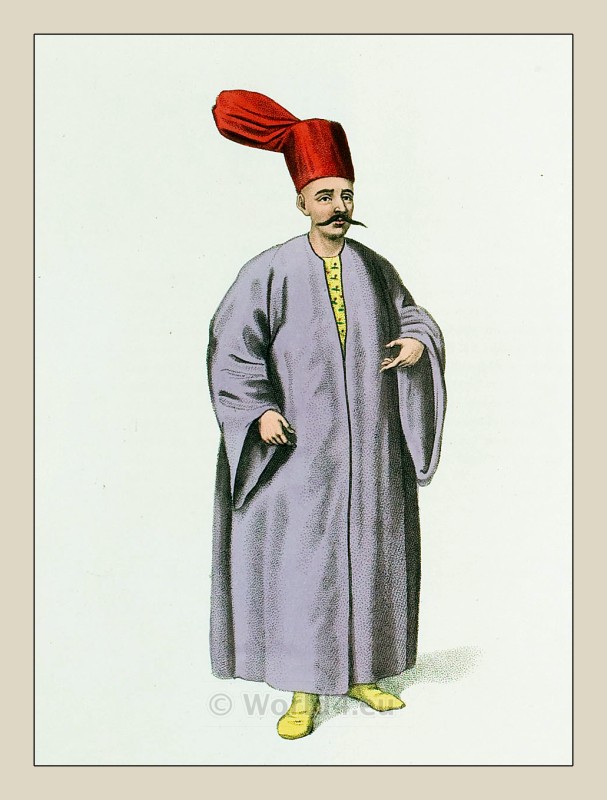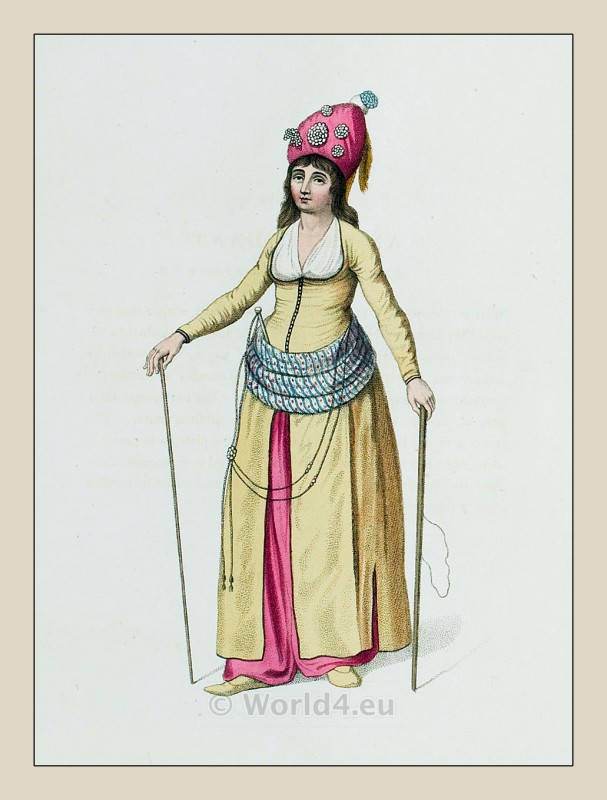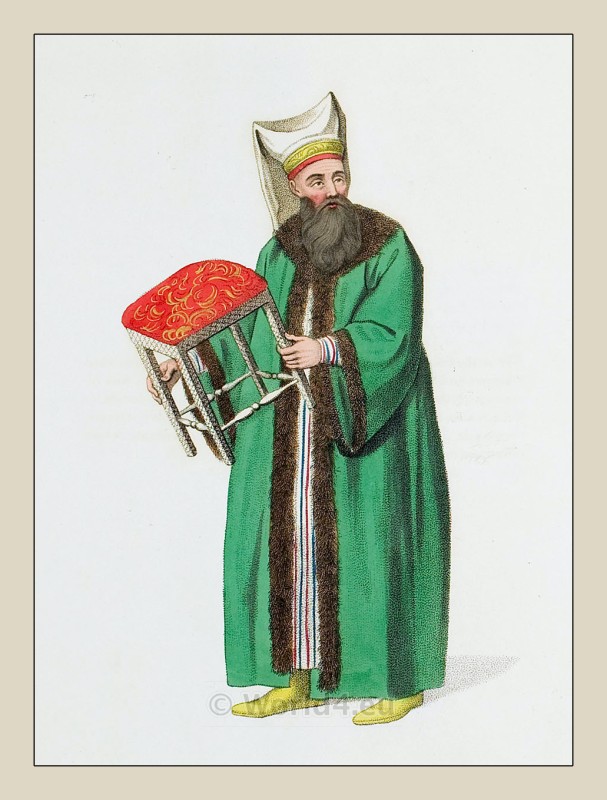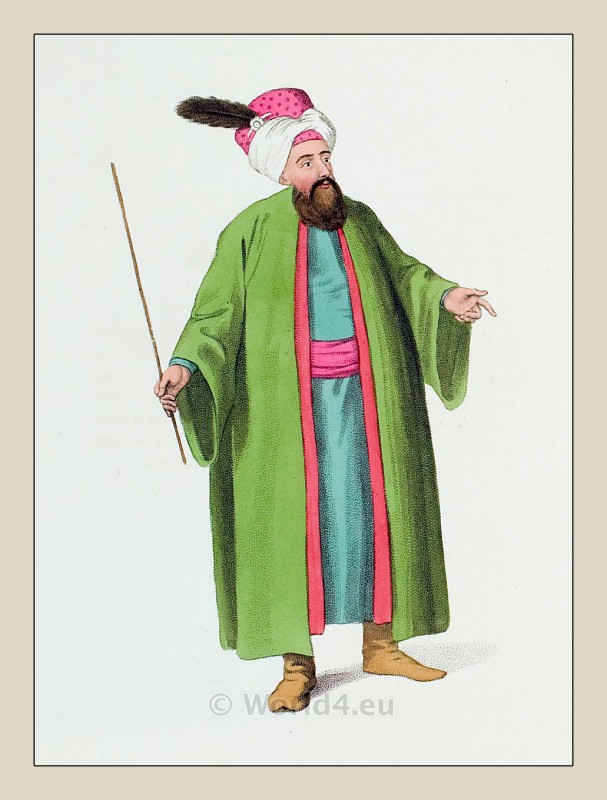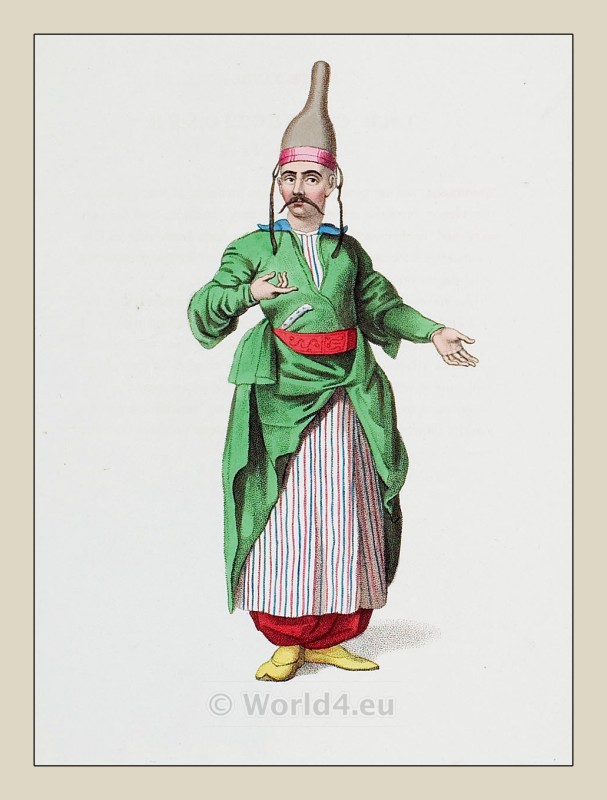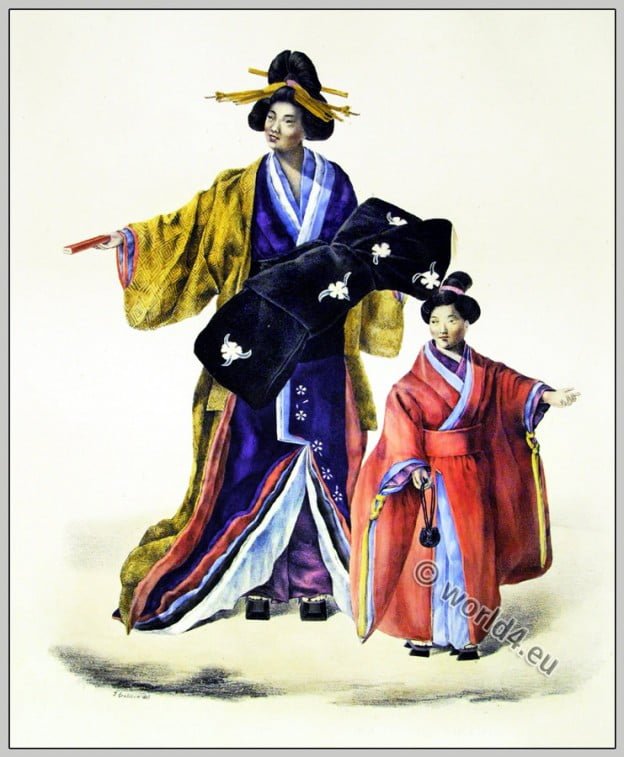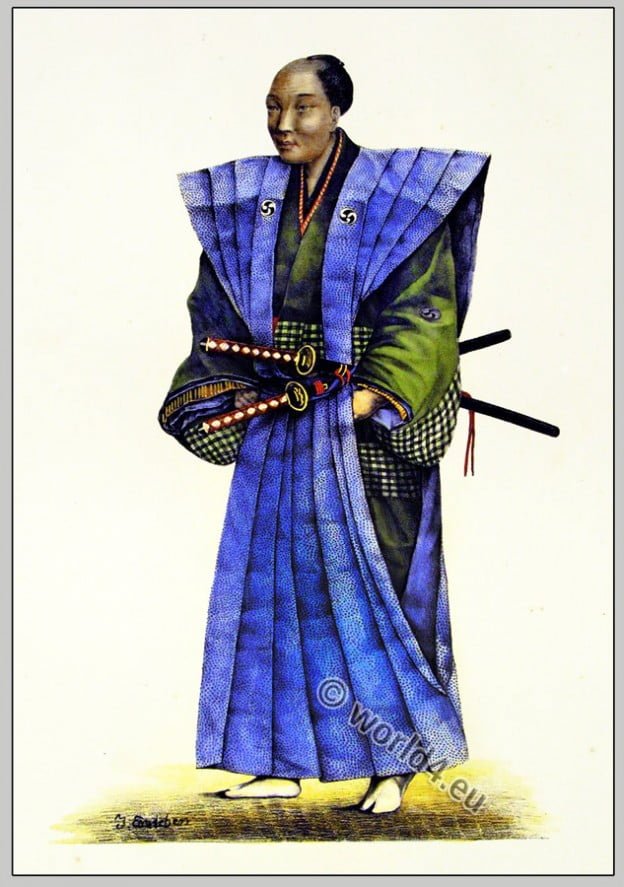Bostancı başı. They are, indeed, most excellent rowers, and are always employed as such in the Sultan’s caique, or barge, which is steered by the Bostandji Bachi.
Category: Asia
Costume and fashion history of Asia. Manners and Customs. Collected from rare sources.
A Turkish lady in her wedding dress. Ottoman Empire.
Historical Ottoman Empire officials and ethnic groups. On her wedding-day the bride dresses herself in the richest clothes she can procure, and puts on all the jewels and other valuables she is possessed of.
An Attendant of the harem of the Grand Signior. Ottoman Empire.
Responsible for order in the Sultan’s harem. The business of the lady, who is the subject of this plate, is to preserve such order, and to punish the Odalisks
Stool bearer to the Turkish Sultan. Ottoman Empire.
Stool bearer to the Turkish Sultan. (in charge of guarding and carrying the Sultan’s riding stool).
The Chief Usher to the Turkish Sultan. Ottoman Empire.
One of their employments, among others, is to present every one who is introduced at court, or approaches the fool of the throne; and, on some particular occasions, this is done by the chief usher himself.
A Usher at the court of the Turkish Sultan. Ottoman empire.
That body of men, to whom Europeans give the name of Ushers, is of a very great use in the court of the Grand Signior.
The Chief confectioner to the Sultan. Ottoman Empire.
The confectioner to the palace. Chief confectioner of the Turkish Sultan.
Japanese noblewomen with child in 1810.
Japanese Noblewomen with child in court dress by Franz von Siebold
Japanese Nobleman in court dress, 1810.
Japanese nobleman with states clothing by Franz von Siebold
Japanese citizens. Traditional clothing 1810.
Japanese citizens in traditional clothing about 1810, by Franz von Siebold.

